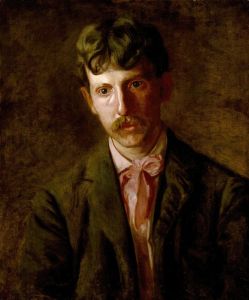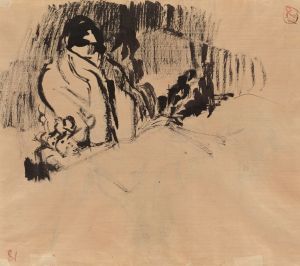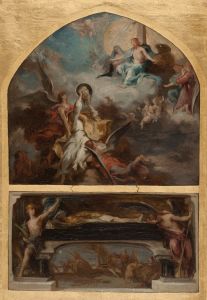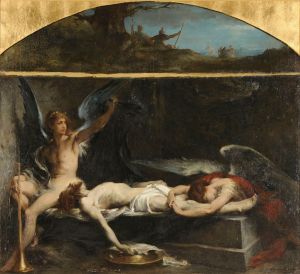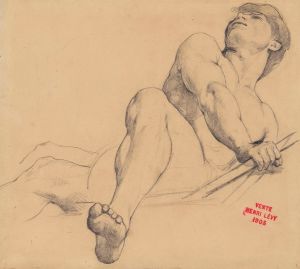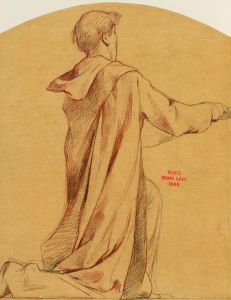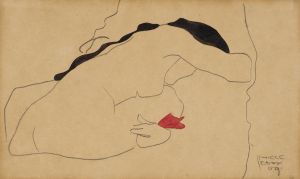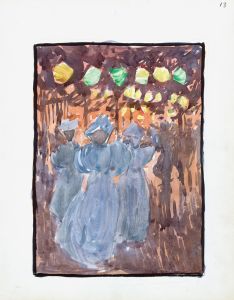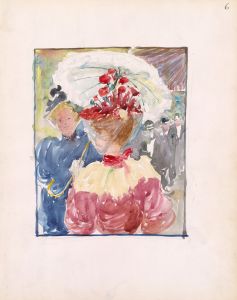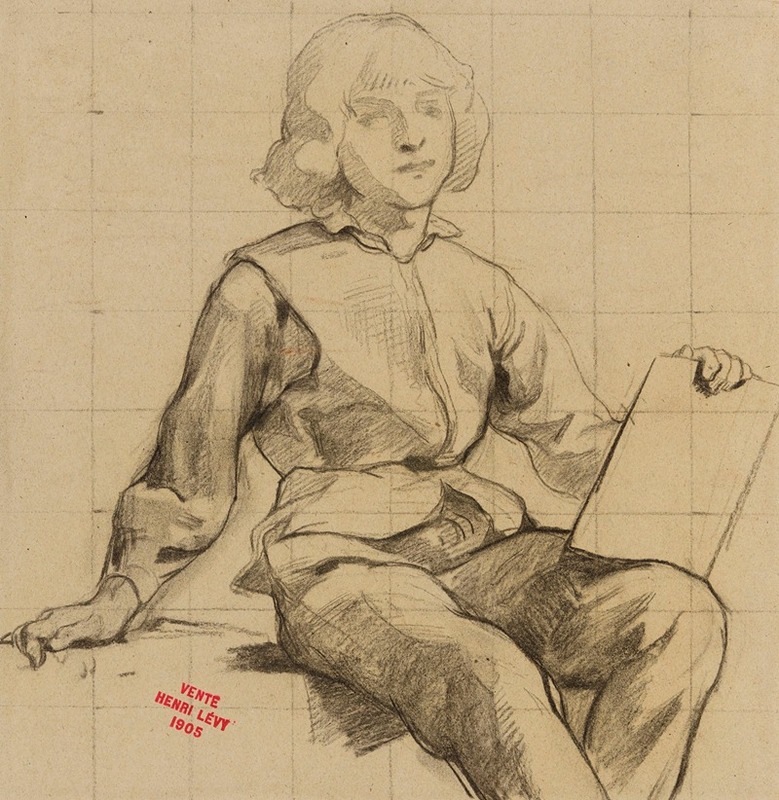
Etude de jeune homme assis tenant une tablette
A hand-painted replica of Henri Leopold Lévy’s masterpiece Etude de jeune homme assis tenant une tablette, meticulously crafted by professional artists to capture the true essence of the original. Each piece is created with museum-quality canvas and rare mineral pigments, carefully painted by experienced artists with delicate brushstrokes and rich, layered colors to perfectly recreate the texture of the original artwork. Unlike machine-printed reproductions, this hand-painted version brings the painting to life, infused with the artist’s emotions and skill in every stroke. Whether for personal collection or home decoration, it instantly elevates the artistic atmosphere of any space.
Henri Léopold Lévy was a French painter known for his works in the academic style, which often depicted historical, religious, and mythological subjects. One of his lesser-known works is "Etude de jeune homme assis tenant une tablette" (Study of a Seated Young Man Holding a Tablet). This painting exemplifies Lévy's skill in capturing the human form and his attention to detail, which were hallmarks of his artistic approach.
Henri Léopold Lévy was born on September 23, 1840, in Nancy, France. He studied at the École des Beaux-Arts in Paris, where he was a pupil of François-Édouard Picot and Alexandre Cabanel, both prominent figures in the academic art world. Lévy's education under these masters greatly influenced his style, which adhered to the principles of academic art, emphasizing realism, precise draftsmanship, and a polished finish.
"Etude de jeune homme assis tenant une tablette" is a study, which suggests that it was likely created as a preparatory work for a larger composition or as an exercise in capturing the human figure. The painting depicts a young man seated, holding a tablet, which could imply an engagement with learning or contemplation. The figure is rendered with careful attention to anatomy and posture, reflecting Lévy's academic training and his ability to convey the subtleties of the human body.
The use of light and shadow in the painting highlights the contours of the young man's form, adding depth and dimension to the composition. Lévy's choice of a seated pose allows for a relaxed yet thoughtful depiction, inviting viewers to ponder the subject's thoughts or the context of the scene. The simplicity of the setting and the focus on the figure suggest that Lévy intended to emphasize the study of the human form itself, rather than any narrative or symbolic content.
Lévy's work, including "Etude de jeune homme assis tenant une tablette," fits within the broader context of 19th-century French academic art, which was characterized by its adherence to classical ideals and its emphasis on technical skill. During this period, artists often produced studies and sketches as part of their creative process, using them to explore composition, form, and technique before executing larger, more complex works.
While "Etude de jeune homme assis tenant une tablette" may not be as widely recognized as some of Lévy's other paintings, it nonetheless demonstrates his proficiency as an artist and his commitment to the principles of academic art. Lévy's career included participation in the Paris Salon, where he exhibited his works and gained recognition for his contributions to the art world. His paintings often explored themes of history, mythology, and religion, rendered with a meticulous attention to detail and a dedication to the academic style.
Henri Léopold Lévy passed away on December 29, 1904, leaving behind a legacy of works that continue to be appreciated for their technical excellence and their embodiment of 19th-century academic art traditions. "Etude de jeune homme assis tenant une tablette" remains a testament to Lévy's skill in capturing the human form and his ability to convey a sense of introspection and contemplation through his art.





